 Travel
Travel  Travel
Travel  Creepy
Creepy 10 Haunted Places in Alabama
 History
History Top 10 Tragic Facts about England’s 9 Days Queen
 Food
Food 10 Weird Foods Inspired by Your Favorite Movies
 Religion
Religion 10 Mind-Blowing Claims and Messages Hidden in the Bible Code
 Facts
Facts 10 Things You Never Knew about the History of Gambling
 Weird Stuff
Weird Stuff 10 Cool and Creepy Facts about Collecting Tears
 Humans
Humans The Ten Most Lethal Gunslingers of the Old West
 Misconceptions
Misconceptions 10 Phony Myths and Urban Legends That Just Won’t Die
 History
History 10 Amazing Roman Epitaphs
 Travel
Travel Top 10 Religious Architectural Marvels
 Creepy
Creepy 10 Haunted Places in Alabama
 History
History Top 10 Tragic Facts about England’s 9 Days Queen
Who's Behind Listverse?

Jamie Frater
Head Editor
Jamie founded Listverse due to an insatiable desire to share fascinating, obscure, and bizarre facts. He has been a guest speaker on numerous national radio and television stations and is a five time published author.
More About Us Food
Food 10 Weird Foods Inspired by Your Favorite Movies
 Religion
Religion 10 Mind-Blowing Claims and Messages Hidden in the Bible Code
 Facts
Facts 10 Things You Never Knew about the History of Gambling
 Weird Stuff
Weird Stuff 10 Cool and Creepy Facts about Collecting Tears
 Humans
Humans The Ten Most Lethal Gunslingers of the Old West
 Misconceptions
Misconceptions 10 Phony Myths and Urban Legends That Just Won’t Die
 History
History 10 Amazing Roman Epitaphs
10 Things That Prove Fact is Stranger than Fiction
Oscar Wilde once wrote that “Life imitates Art far more than Art imitates Life.” The following list should prove that there’s some truth to his observation – life is often stranger, just as interesting, just as surprising, and just as exciting as fiction. Works of fiction often inspire copycats, but the entries on the list were chosen because they happened independently of their fictional counterpart. They are presented in no order.
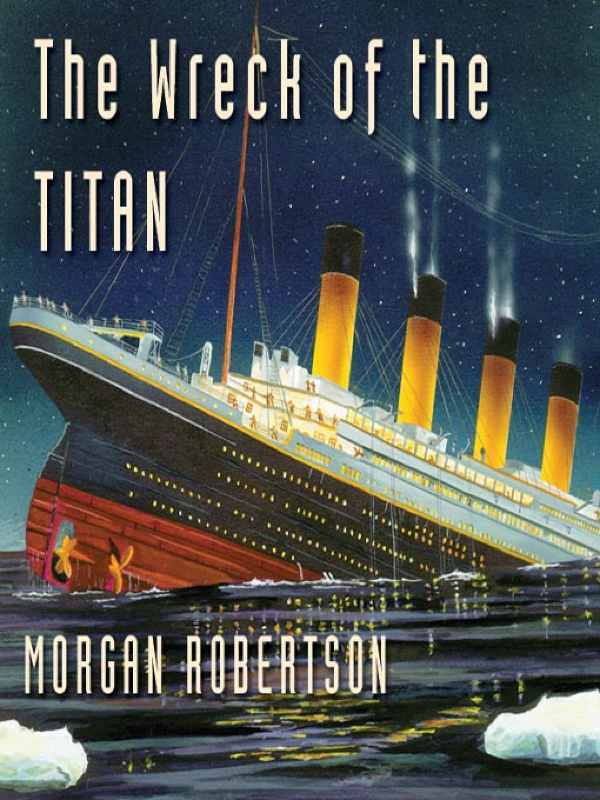
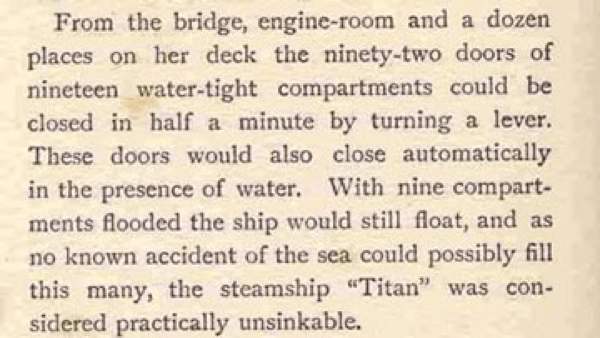
“She was the largest craft afloat and the greatest of the works of man… Unsinkable – indestructible, she carried as few life boats as would satisfy the laws.”
A luxury liner embarks on her first voyage with much fanfare, only to hit an iceberg and capsize. Sound familiar? But this isn’t an account of the RMS Titanic; this is the plot of The Wreck of the Titan, a novella written by Morgan Robertson. Wreck was published in 1898, more than a decade before the real-life wreck of the Titanic.
The similarities between the fictional and the real-life are astounding. Both were considered glorious feats of modern engineering, were touted as being practically unsinkable, contained less than half the number of life boats required, and were struck by icebergs on their starboard side, taking half of their passenger’s lives. Finally, both the Titan and the Titanic sank in the North Atlantic Ocean on a night in April.
In 1912, a new version of The Wreck of the Titan was released that increased the Titan’s weight from 45 000 tonnes to 70 000, bringing it closer to the Titanic’s 66 000. You can read that version here.

Horror movie aficionados, who started preparing for the zombie apocalypse back when George Romero released his first Day of the Dead film, had the last laugh in 2012.
A video of a man attacking and eating the face of a homeless man made the rounds of the internet in May of 2012. Police later confirmed that it wasn’t a hoax or an edgy viral marketing campaign – it was security camera footage of Miami resident Rudy Eugene’s attack on Ronald Poppo. Dozens more cannibal stories started appearing in the media in the following months.
Bath salts, a designer drug said to induce hallucinations and paranoia, has been blamed for the so-called rise of zombie attacks, despite the fact that many of the attackers tested negative to the drug. The Centre for Disease Control even released a statement dismissing the existence of a virus or condition that would induce zombie-like effects. It’s more than likely that the response to Poppo’s attack resulted in the media over-reporting anything with a tenuous link to cannibalism, making the trend seem more prevalent and alarming than it really was.
But if we forget facts and reasoning for just a minute, we’ve got a drug that turns people into zombies, a spate of attacks, and a government organisation denying everything. Sounds exactly like a zombie flick to me.

The Coup is a hip hop act from California. Their music is highly political and often promotes an anti-capitalism ideology. This led to an unfortunate coincidence in 2001.
The band’s fourth album, Party Music, was due for release in September 2001, but ended up being delayed until November. The reason – the albums original cover depicted two of the band members, Boots Riley and Pam the Funktress, standing in front of the exploding Twin Towers. Boots Riley held a digital tuner that ostensibly served as detonator.
The photo was shot in May of that year and was meant to symbolise the destruction of capitalism. Less than six months later, the events of September 11 turned a powerful image into a contentious one. But The Coup aren’t the type to shy away from controversy – Boots Riley stated later that he would have preferred to retain the original cover art as an expression against what he felt were lies perpetrated by the mainstream media.
The climax of Chinatown is one of cinema’s most classic scenes. Private investigator Jake Gites, played by Jack Nicholson, confronts Evelyn Mulwray (Faye Dunaway) over the identity of a mystery woman who Evelyn claims is her sister. Gites, who has spent most of the movie chasing red herrings and dead ends, loses his temper and slaps Evelyn as she cries, “My sister… my daughter… she’s my sister and my daughter!” – the result of the incestuous rape of Evelyn by her father.
Take away the rape and incest and you’ve got Jack Nicholson’s own familial situation.
Nicholson was the son of June Nicholson, a seventeen year old showgirl. June’s mother Ethel offered to raise him so that June could concentrate on her dancing career, and so Nicholson grew up believing that his grandmother Ethel was his mother, and that his mother June was his sister. The story broke in the lead up to the release of Chinatown, when a Time reporter contacted Nicholson to verify the story. We can only hope that the reporter slapped the actor as he cried, “My sister… my mother… she’s my sister and my mother!”
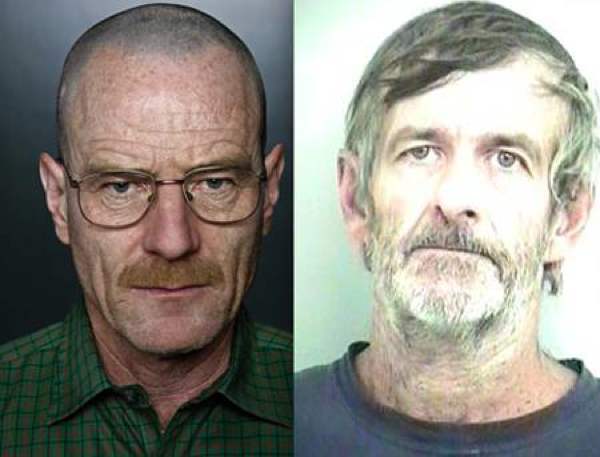
Breaking Bad is an American TV series about Walter White, a terminally ill high school teacher who starts producing and selling meth amphetamines to ensure his family’s financial security after he dies. Turns out, one of the most wanted criminals in Tuscaloosa, Alabama is a man named Walter White, who is wanted for – you guessed it – manufacturing crystal meth. The real-life Walter White isn’t a former school teacher, but he does resemble his onscreen counterpart. Well, they both have beards.
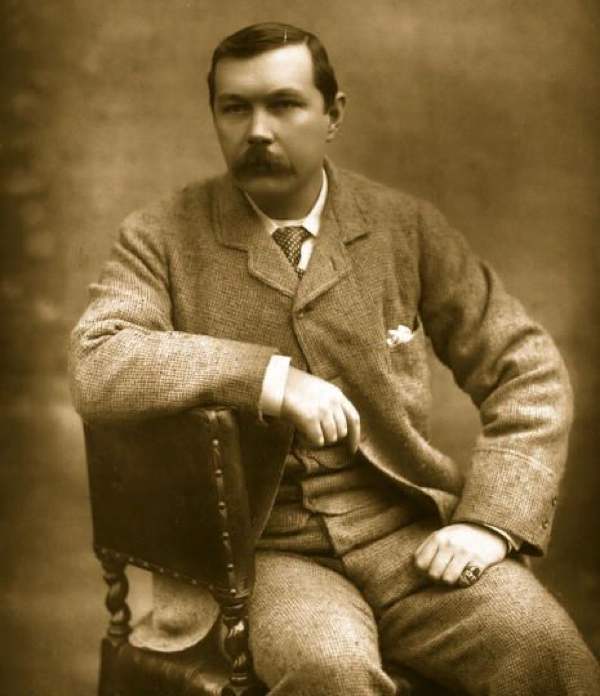
The creator of the world’s most famous detective became something of a detective himself in his later years. Arthur Conan Doyle was instrumental in proving the innocence of two convicted men in the early twentieth century.
In 1903, a West Midlands solicitor called George Edalji was convicted of maliciously injuring a pony, and sentenced to seven years hard labour. Conan Doyle investigated the case, and concluded that the crime for which Edalji had been convicted, as well as several similar incidents, had been perpetrated by a local butcher’s son. It’s necessary to point out the dubious nature of this claim, and that it was based on the same type of circumstantial evidence that had led to Edalji’s conviction. However, it led to Edalji being found innocent of the crime.
A couple of years later, Oscar Slater, a German Jew who had moved to London to escape military service, was convicted of killing an elderly woman during a robbery. In 1909, he was sentenced to death (later downgraded to life imprisonment). Three years later, Conan Doyle published The Case of Oscar Slater, an essay that listed the flaws in the case – amongst them, that Slater’s alibi was dismissed by police, that eyewitness accounts of the suspect didn’t match Slater’s appearance, and suspected bias against Slater because he was German and Jewish. The author funded a large portion of the cost of Slater’s appeal and his conviction was overturned in 1928.
These cases, as well as others performed by Conan Doyle in his role as justice advocate, led to the implementation of protective systems like the Court of Criminal Appeal, which was established after George Edalji’s case.

While it’s probably a stretch to call Final Destination ‘art’, the film franchise’s premise – that death is inevitable and those who try to escape it can only prolong their lives a little longer – is one that almost appears to have played out in a couple of real life situations. A contemporary example is that of Jessica Ghawi.
Ms. Ghawi, an aspiring sports journalist known professionally as Jessica Redfield, was at a Toronto mall in June 2012 when a gunman killed a 25 year old male and injured seven others. In a blog entry – the last she would ever write – she describes how she went to the mall to get sushi but changed her mind at the last minute and got a burger and fries instead. She then made a purchase and, according to the entry, ‘felt funny… a feeling that was overwhelming enough to lead me to head outside in the rain to get fresh air instead of continuing back into the food court to go shopping at SportCheck.’ Either event may have saved her life. The gunman started shooting at 6.23pm, minutes after Ms Ghawi’s purchase was made at 6.20pm. One of the victims was found in the same place where she would have been if she’d ordered sushi.
A month later, Jessica Ghawi was living in Denver and working as an intern for a local radio station. On July 20, 2012, she attended the ill-fated midnight screening of The Dark Knight and was killed when a gunman entered the theatre and opened fire. You can read her chillingly prophetic blog entry here.
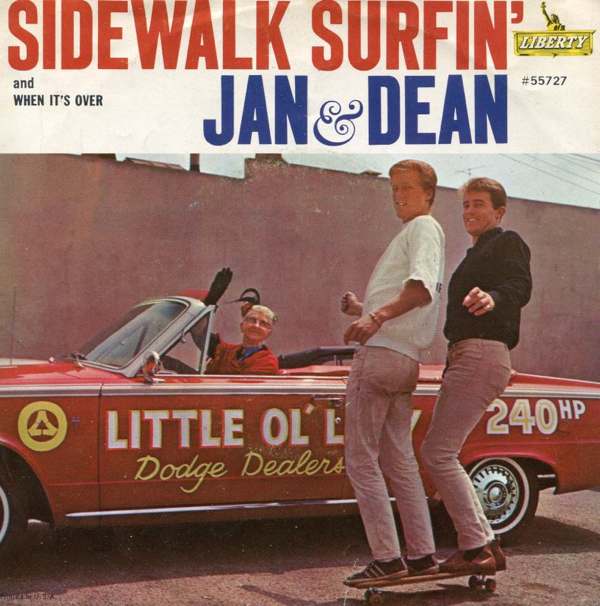
Jan Berry and Dean Torrence, better known as Jan and Dean, were a popular rock duo in the late 1950’s and early 60’s. They were one of the first musical acts to find success with the California surf music style that would later become the hallmark of The Beach Boys. Their most well known hit is Surf City, but Jan and Dean are probably remembered more for the strange circumstances surrounding Jan Berry’s car crash than their music.
In 1964, the duo released a death ballad entitled Dead Man’s Curve. It told the tragic tale of a drag race between two teenagers, one driving a Corvette Sting Ray, the other a Jaguar, who both perish when their cars collide around Dead Man’s Curve on North Whittier Drive in Los Angeles. Two years later, Jan Berry was involved in a near fatal car accident when he crashed his Corvette Sting Ray into a parked car on North Whittier Drive. He spent several weeks in a coma and suffered permanent brain damage.
To add one final chilling layer to this story, Roger Christian, who co-wrote Dead Man’s Curve, originally wanted the song’s race to end in a tie. Jan Berry insisted that the song ended with a car crash, inadvertently setting up the spooky parallel.
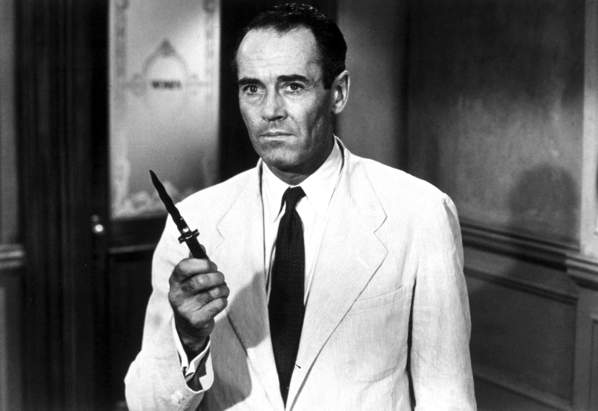
12 Angry Men was originally a teleplay for a TV anthology series called Studio One, but most people are familiar with its 1975 film adaptation, which sees Henry Fonda play a juror in a seemingly straight forward murder case. Fonda’s character is not convinced of the defendant’s guilt and casts the single ‘not guilty’ verdict. The remainder of the movie sees him try to convince his fellow jurors of reasonable doubt in the case.
Although a cinematic classic, the film has been criticised for its reliance on speculation and circumstantial evidence. A few people working within the justice system have pointed out that if the situation were to play out in real life, it would have resulted in a mistrial. Turns out, they were wrong.
In 2008, an 18 year old English college student was on trial for the manslaughter of a 72 year old man. One of the jurors conducted their own investigation, using a combination of measurements and observations taken from the actual crime scene and forensic techniques found on the internet. Despite the rules forbidding personal investigations, the judge found that the case was fatally flawed, and ordered that the defendant be found not guilty.
In June 2010, a series of political machinations led to Australian Prime Minister Kevin Rudd being replaced as leader of the Australian Labor Party by his deputy Julia Gillard, effectively ending his tenure as Prime Minister. At the time, his daughter Jessica’s debut novel was in the process of being published. Its release a month later raised a few eyebrows.
Campaign Ruby tells the story of a London investment banker who moves to Australia and (despite not having a working visa or even knowing who the Prime Minister is) lands herself a job as financial advisor to the Leader of the Opposition. Shortly afterwards, the female Treasurer overthrows the Prime Minister and takes on the job herself.
The fictional Prime Minister’s final speech, written a year earlier, is near identical to Kevin Rudd’s final speech. Jessica Rudd’s PM gives his speech outside Old Parliament House; Kevin Rudd gave his speech at the new Parliament House. Both PM’s stand beside their wife as they talk about how proud they are of the things they’ve done and make magnanimous comments about their successors. Both cry and make dumb jokes.
Finally, in both incarnations, an early election is called. For the first time in Australian history, male and female candidates compete for the top job. But that’s where the similarities end – in Campaign Ruby, our plucky heroine helps the Leader of the Opposition win office, while in real life, Julia Gillard remained in her role.








